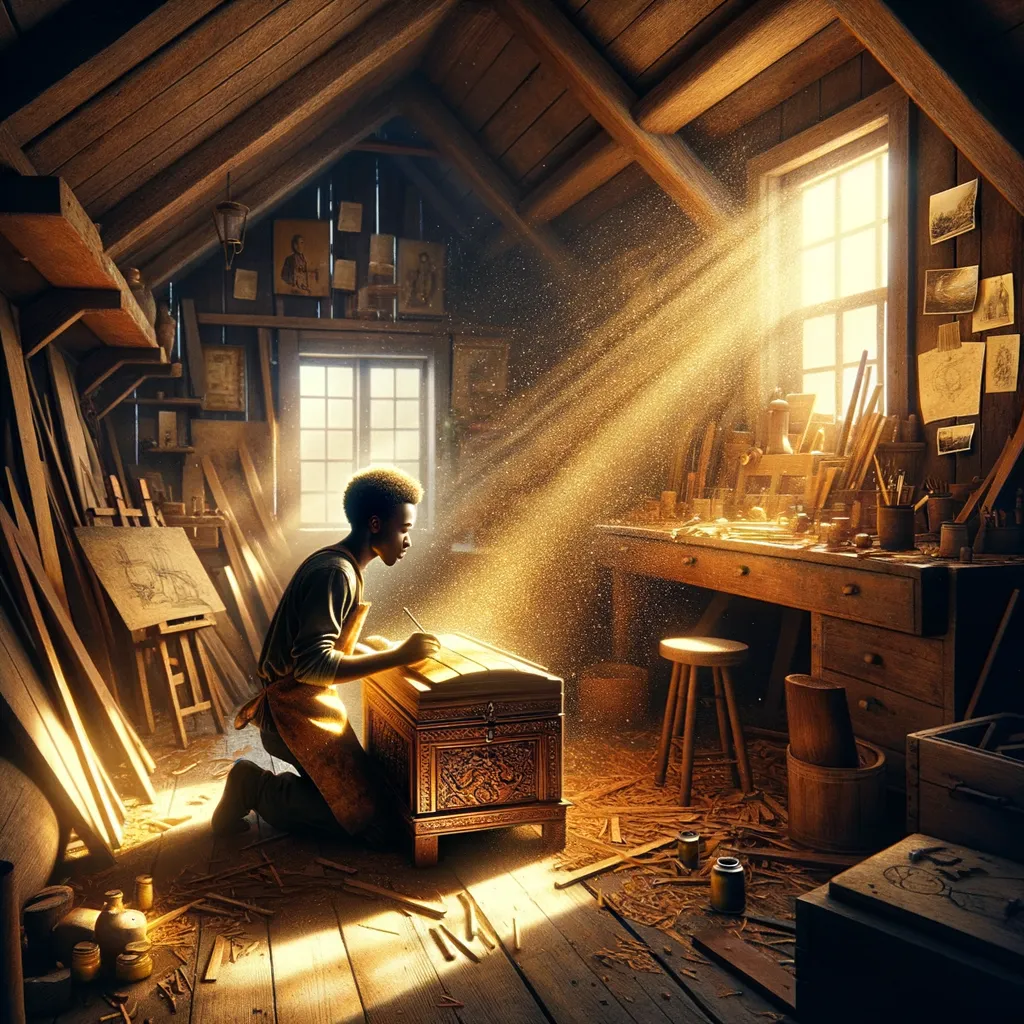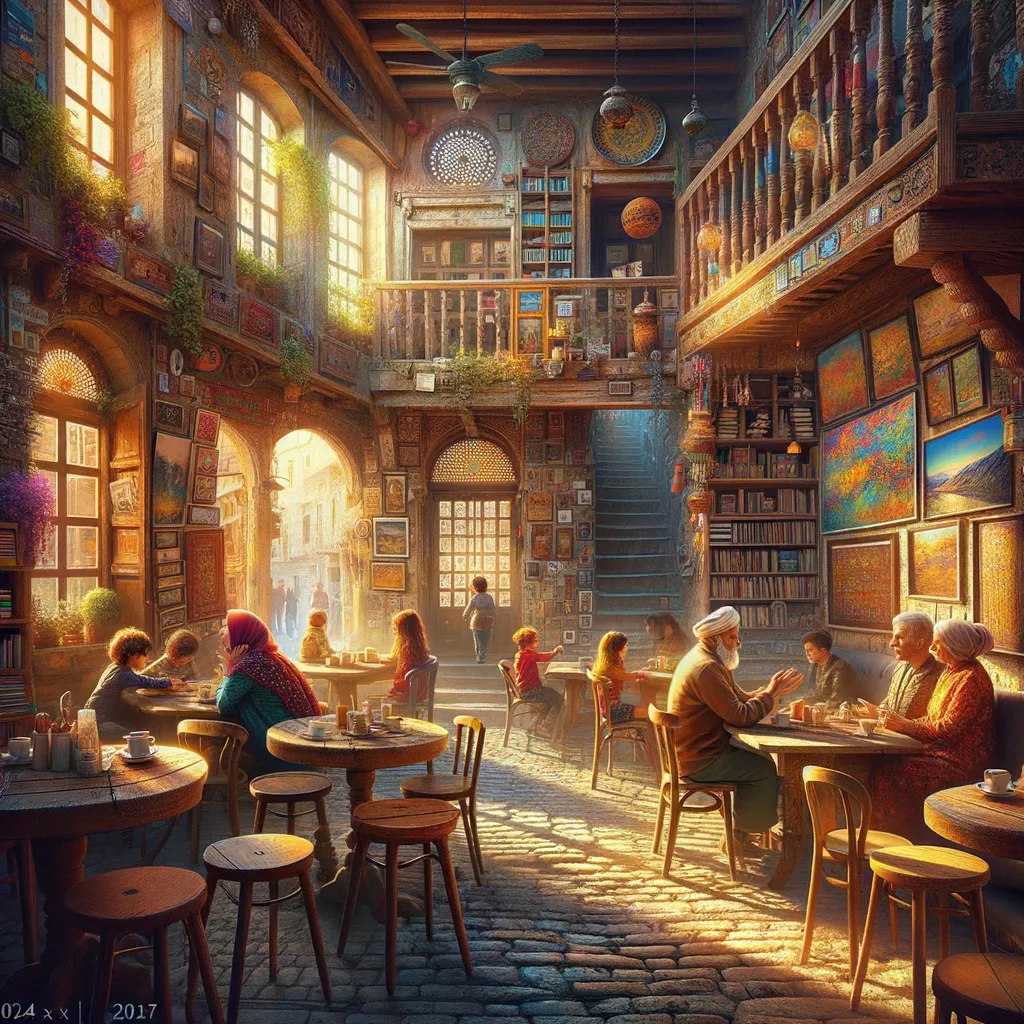Unveiling Secrets: A Legacy Carved in Wood and Time
In the hushed confines of a dusty attic, a young soul stumbles upon a beautifully carved wooden box, awakening the echoes of a forgotten legacy. As the scent of cedar fills the air, the discovery of woodworking tools and sketches reveals a craft once mastered by a great-grandfather, igniting a spark of inspiration and connection to the past. Each splintered board and crooked joint becomes a lesson in patience, transforming the act of creation into a journey of self-discovery and resilience. With every piece crafted, the young artisan finds solace and meaning, bridging generations through the tangible beauty of handmade objects. Ultimately, the journey of reclaiming this ancestral skill becomes a metaphor for life itself, inviting all to explore the hidden treasures of their own heritage waiting to reshape their identities.
In the memory of June 7, 2002, I found myself wandering through the dimly lit attic of my grandparents’ old house, a space thick with dust and whispers of forgotten tales. The air was cool, each breath a reminder of the past, and as I shifted the boxes piled high, a glimmer caught my eye. Nestled among faded photographs and moth-eaten quilts lay a wooden box, intricately carved with swirling patterns, each twist of the grain telling a story that begged to be heard. It was in that moment that I felt the weight of generations pressing down upon me, urging me to uncover a skill long overshadowed by the march of time.
As I opened the box, a delicate scent of cedar wafted through the air, mingling with the mustiness of memories. Inside, I discovered an assortment of tools: chisels, mallets, and an ancient, worn-out book filled with sketches of furniture that seemed to dance off the page. My heart raced as I recognized the art of woodworking—a craft my great-grandfather had mastered, a skill that had shaped not only his life but the very foundation of our family’s legacy. Each item was a portal to a time when hands were the primary instruments of creation, not just for utility but for beauty and love.
In a world captivated by screens and instant gratification, the idea of carving something from a block of wood felt revolutionary. The very thought of shaping raw materials into something tangible and lasting ignited a flame within me. I imagined my great-grandfather hunched over his workbench, the rhythmic tap of his mallet echoing in the stillness, as he transformed a simple log into a chair that would cradle future generations. It wasn’t just about craftsmanship; it was about connection—between past and present, between the maker and the recipient.
Yet, with each stroke of nostalgia came the pang of loss. I realized that this skill was not merely forgotten; it was overshadowed by our fast-paced lives, replaced by the allure of technology. In that attic, amidst the dust motes swirling in the sunlight, I felt a yearning to reclaim that piece of heritage, to breathe life back into a craft that had once flourished in the hands of my ancestors. The wood, with its knots and imperfections, spoke to me of resilience, of stories embedded in its very fibers.
As I began to explore the world of woodworking, I encountered both triumphs and failures. Each splintered board and crooked joint became a lesson in patience and humility. I learned that mastery was not a destination but a journey marked by trial and error, much like life itself. The smell of sawdust clung to my clothes, a testament to hours spent in focused silence, where thoughts could drift and dreams could take shape. I discovered a rhythm, a meditative flow that echoed the heartbeat of my lineage.
Every piece I crafted felt imbued with meaning. A simple cutting board transformed into a gift for a friend, each groove and curve a reflection of my love. A stool for my kitchen became a symbol of resilience, a reminder that even the roughest edges can be smoothed with patience and care. With every creation, I felt closer to my roots, the stories of my ancestors intertwining with my own, as if they were guiding my hands along the way.
Yet, the journey was not without its challenges. There were moments of self-doubt when I questioned whether I could ever truly master this art. As I stood before my workbench, the weight of expectation pressed down, threatening to extinguish the flame of inspiration. But it was in those moments of struggle that I learned the most—about perseverance, about the beauty of imperfection, and about the courage it takes to embrace the unknown.
The craft of woodworking became a metaphor for my own life—a series of carefully planned cuts, unexpected knots, and beautiful flaws. It taught me that while we may strive for perfection, it is often in the imperfections that we find our truest selves. Each creation was a reflection of my journey, a tangible manifestation of growth and discovery, and a reminder that the act of creation is inherently tied to the act of living.
As I placed the last piece of furniture into my home, I took a moment to reflect on the journey that had brought me here. The wooden pieces stood proudly, not just as functional objects but as vessels of memory, each one carrying whispers of my ancestors’ wisdom. In reclaiming their craft, I had not only honored their legacy but also discovered a deeper connection to my own identity.
In a world that often rushes forward, I found solace in the act of creation, a reminder that the skills of our ancestors are not just relics of the past but keys to unlocking a richer, more meaningful existence. What forgotten skill lies waiting in the shadows of your own heritage, and how might it reshape your understanding of who you are?
In the quiet embrace of forgotten memories, the act of creation becomes a bridge, connecting generations through the resilient beauty of imperfection.



